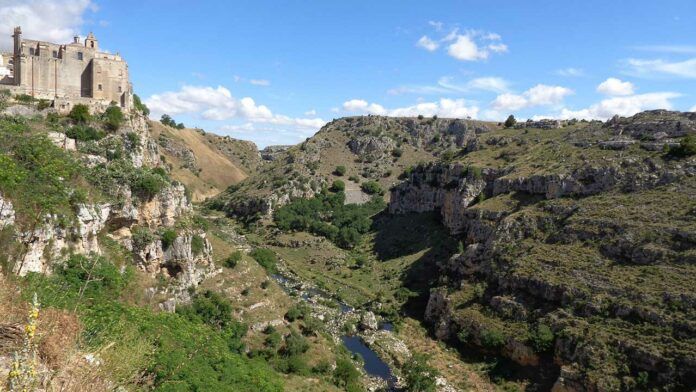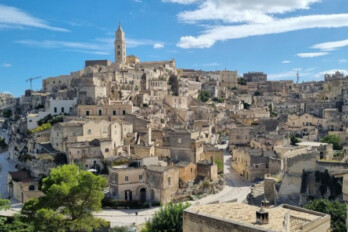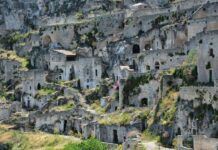In the tufa caves that dot the rugged landscapes of the Murgia, over the centuries many monks have taken refuge and splendidly frescoed them. A territory to explore, perhaps with an organized trek.
From the Sassi and from their numerous belvederes, looking eastwards, you can see the wonderful natural archaeological scenery of the Parco della Murgia Materana e delle Chiese Rupestri. It covers about 8,000 hectares between the towns of Matera and Montescaglioso and was established in 1990 to protect, recover and enhance the natural habitat and heritage of the rock churches and in 2007 was incorporated into the UNESCO site of the Sassi, already proclaimed in 1993.
Do not be fooled by its harsh appearance, because the territory of the Murgia Park hides, in reality, a beauty marked by imposing cliffs, undulating expanses, waterfalls and deep gorges. It is home to various types of animals, including the one that has become its symbol, the kestrel falcon, and a flora that includes about 923 species, about one hundred of which are very rare. Losing oneself in the silence of this landscape, leaving in the background only the sound of the stream that caresses the canyon is an almost mystical experience.
But the park is also one of the most important archaeological sites in Italy and walking along the trails is like a dip in history, through caves dating back to the Paleolithic and Neolithic, became home to prehistoric men in search of shelter, entrenched villages and rock churches. The more than 150 churches that dot the territory, almost entirely excavated in the rock, dating back to a period ranging from the early Middle Ages to the nineteenth century. These ancient places of worship are linked to the settlement in the territory of several ecclesiastical institutions, including religious of the Greek-Orthodox rite and the Benedictines, who enlarged the caves with arches, vaults and naves and embellished them with beautiful frescoes.
Some of them are characterized by the presence of a single nave, such as that of the “Madonna della Croce”, others have two naves as the church of the “Cappuccino Vecchio” or three naves as the “Madonna delle tre Porte”. The rock churches are real jewels, set in the rock of the Murge, but one of them shines more than all: it is the “Crypt of the Original Sin”, called the “Sistine Chapel” of the wall painting, on whose walls is frescoed an extraordinary pictorial cycle dating back to the ninth century.










